The must-have fashion planner for Durga Puja
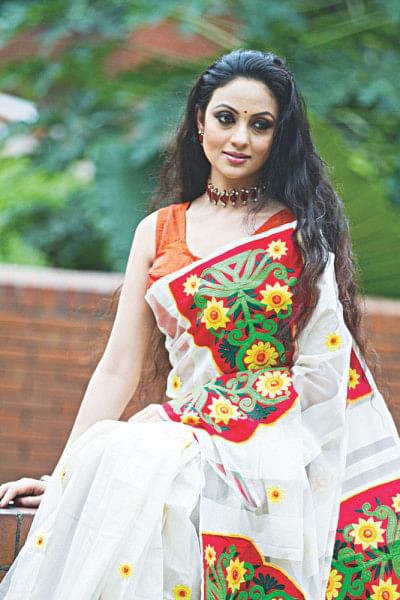
Day 7 Saptami
Durga Puja usually kicks off on the seventh day when the deity's sculpture is brought in. There usually is less crowd or traffic at the mandaps, so maybe it's best to start off from the evening of Saptami, keeping in mind that it has a more mellow, calm and soothing aura. This gives you a chance to check out the smaller mandaps in your localities and elsewhere. With an overall casual and more chilled out vibe, welcome the festivities with the yellowish spectrum of colours (mustard, orange) and maroon. Attire wise, go for a more fusion look, saving the statement outfits for Ashtami and Nabami. Mustard coloured kurtis, scarves, and tops with a play on the sleeves, jamdani saris, tie-dyed, block and even Tangail saris work well. Skirts, a nice yellow cape with maroon jeggings, flared pants also go great with batik tops in different cuts and styles.
Day 8 Maha Ashtami
In Bangladesh, the eighth day of Durga Puja, especially the mornings, are usually the busiest because most worshippers flock to the mandaps to offer anjali. For most Hindus, it comes down to tradition, customs and even location when it comes to choosing which temple or mandap to go to. Some of the more popular places to visit are, Dhakeshwari Temple, Shidhheshwari Temple, Banani Puja Mandap, Ramna Kali Mandir, Kalabagan Puja Mandap to name a few. If you are looking for that extra special attraction, you can partake in the largest Kumari Puja organised nationwide in the capital at the Ram Krishna Mission. In the simplest of terms, Kumari Puja is the worshipping of a young pre-pubescent girl who is chosen as the manifestation of the devi (divine female energy) for Durga Puja. In households such as mine, observing the Kumari Puja was not an obligation, but rather, an attraction that slowly grew on me over the years. There's an air of charm, mysticism and overall excitement when the Kumari is finely revealed after the wait. Baskets of shredded flowers and leaves are distributed amongst the crowd of hundreds of hands. A sense of unity envelops the massive grounds as hundreds of people chant the mantras in unison and then put the petals back into the basket. The beats of the dhaak, and shonkho calls come to a pause as worshippers take this moment to not only make their offerings, but also pray for healthy lives and prosperity.
The best outfits for the morning prayers are usually saris. You can choose to go all out in the traditional colours of white and golden, or take the more contemporary route and pair white with a bright 'in-your-face' colour like fuchsia, violet or something similar in the same colour group. Whatever you wear, make sure the fabric is breathable, as it gets super-hot at the mandaps during the day so say hello to your new best friends, khadi, cotton, taant and kota! Another nice alternative is to go for white chikankari shalwar kameez with a contrasting dupatta like a benarasi.
High collared top with a stylish sleeve of your choice and matching khussas, flats or sandals, there's no way you can go wrong.
Keeping the Bengali femme in mind, keep your make-up minimal, light and longstanding (again the rising temperatures); simple eyes, or just some kohl, glossed lips preferably, and don't even think about stepping out of the house without a teep!
Keep your hair up in a messy bun, or with a decorative pin and do add some fresh white flowers to it for all those aesthetic photos that you need to take, edit and share for weeks to come!
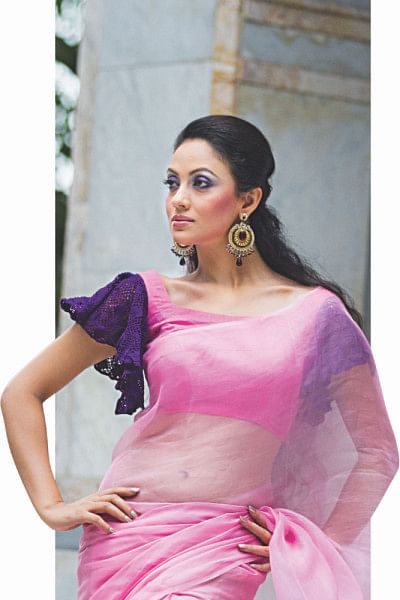
Day 9 Nabami
This honestly is the day to party it out like there's no tomorrow, especially as the hours get longer. The mandaps are buzzing as is the neighbourhood and the restaurants; with people decked out to celebrate and attend dinner parties. Basically, the ultimate level of socialisation, which means there's nothing wrong with a little bit of vanity.
This is the best day to also go mandap hopping. As a child, I detested this part the most because it meant being stuck in traffic for hours before getting to the mandap where everything looked the same to me and I would be exhausted and ready to go home even before the clock struck 10! As an adult, the same lack of excitement remained until my late twenties, when, on a whim, one year I decided to tag along with a group of friends to Old Dhaka.
Yes, this is a MUST and do you want to know why?
Because the narrow alleys of Shankhari Bazar and Taantibazar are unrecognisable as successive elevated horizontal stages are constructed in between the alleys, on top of which the deities are kept. The elevated stages also act as passageways; imagine walking under an actual stage only to be greeted by another one a few feet later.
The music, lights, and decorations is a one of a kind unforgettable experience especially for those who usually frequent mandaps on the other side of the city mostly. End the excursion with something from the many delicacies that Old Dhaka offers (Beauty'r Lassi is godsend by the time you are ready to leave).
Keep it tres-chic, but tres-casual for all the mandap hopping outings in comfy, but stylish palazzo or straight pants with the little details at the bottom, paired with a top of your choice. Nothing beats a kurti in bright colours and patterns; or if you want to be a head turner, couple a white stitched kurti with a bold coloured palazzo. Opt for either option with minimal accessories or just one statement piece necklace or earrings like something in silver (anything oxidised or silver is all the rage this year) or matte gold.
Dinner invites or ending the outing with lounging somewhere with a cup of coffee are very common on this day, so make sure to amp up the style quotient with printed palazzos or printed slim pants and a plain kurti or kameez in the same colour with minimal detailing and embroidery. Khussas or comfy flats and sandals are a must to make sure your feet do not give up in the midst of you hopping mandaps!
Pack on the glam because this is the last day of Durga Puja. Play up your monotone saree with a contrasting embellished blouse and bring out the silks, tussars and muslins for evening wear or if you prefer three pieces, go for anarkalis and shararas. A personal favourite of mine is donning my grandmother's plain red georgette sari with all over golden hajar-buti and golden tassels on the anchal coupled with a white and golden katan blouse. Metallic, dark, jewelled tones are also great for the evenings. Embrace the more dramatic make-up looks, and go all out with accessories, which also include your hair. Wear chunky earrings, jhumkas and pair it with uncountable colourful glass or thin gold bangles.
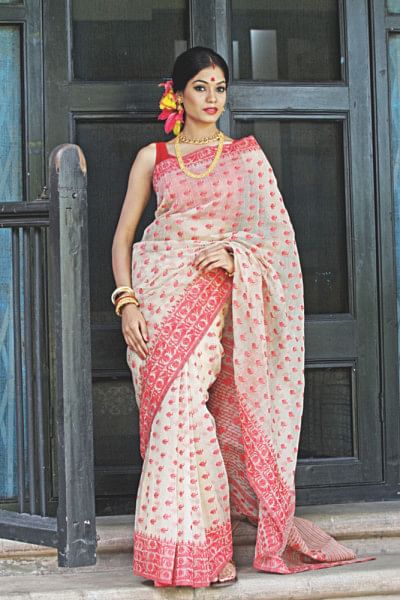
Day 10 Bijoy Dashami
It is an emotional day for the more pious believers, and traditionally, it starts off with the 'Shidur Khela'- the ritual of married women smearing vermillion on the deity Durga's forehead and feet before smearing it onto other married women's faces as well as young girls who usually join in on the fun, dancing to the music and celebrating the last day.
Truth be told, it goes on even well after the 'Bishorjon'- a great procession in which the clay statues of the deities are ceremoniously immersed into a nearby river or pond, so don't get side-tracked and make sure you get a taste of both. During the procession, the congregation sings emotional songs of farewell. As the statue touches the water, it is said to be symbolic of Durga's return to Mount Kailasha with Shiva. Because Bijoy Dashami is an array of mixed emotions and the end of the festivities, this is the one day you see everyone dressed in white saris with a red border, jewellery is minimum but the big red teep has to be the focus of the look.
In general, at the mandaps, do keep a look out for a few of the attractions, which not only includes the delicious offerings (bhog), but also dance performances known as 'Dhunuchu Naach' where people dance with incense burners, and is an integral part in rituals.
If possible, join in the fun when people start dancing to the beat of the dhaak!
Photo: LS Archive/ Sazzad Ibne Sayed



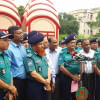

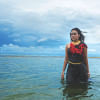
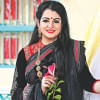
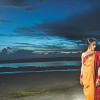


Comments